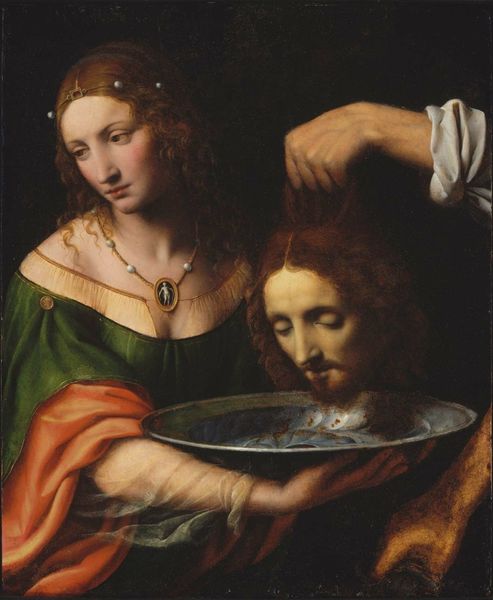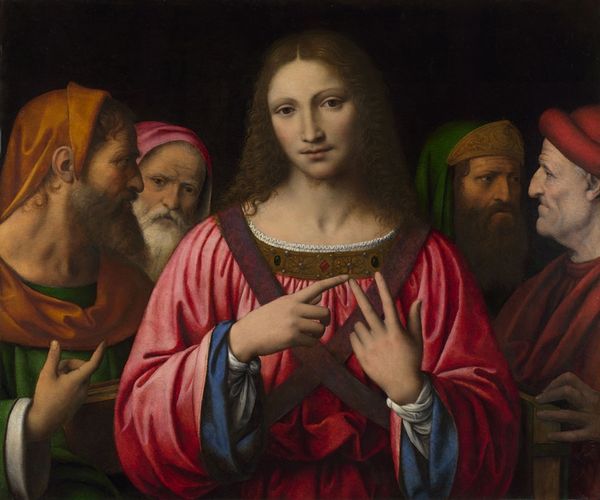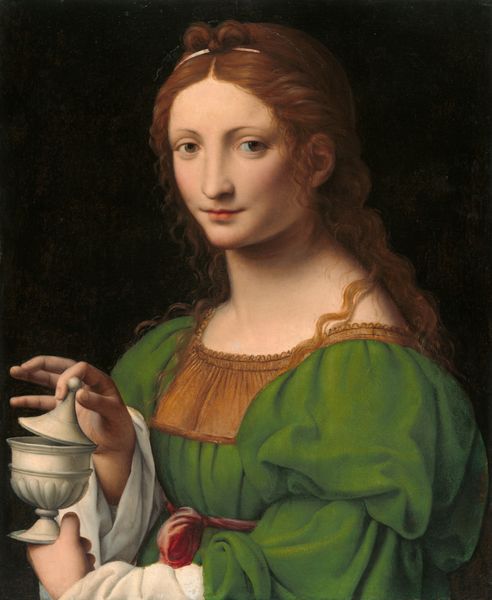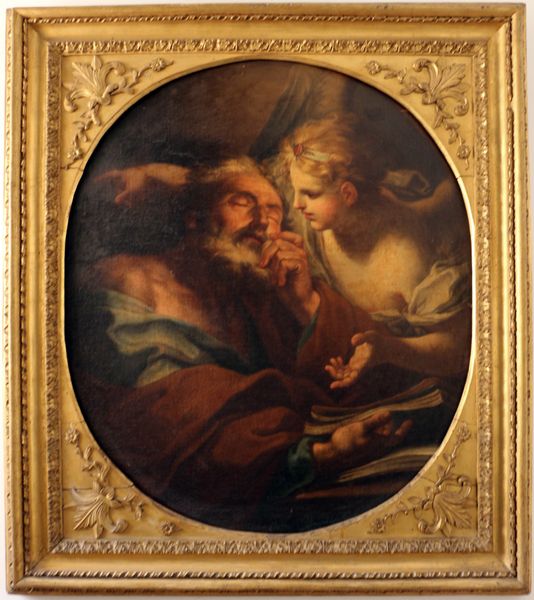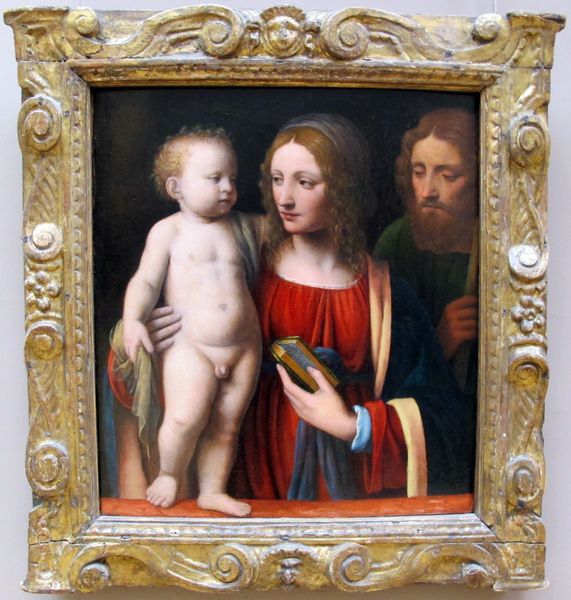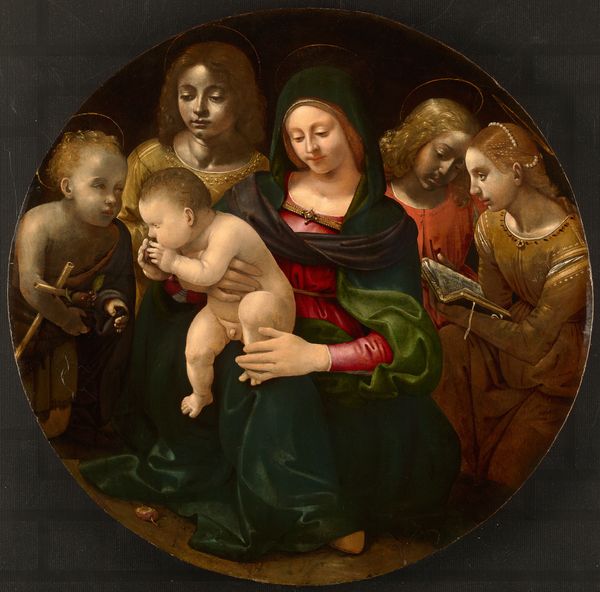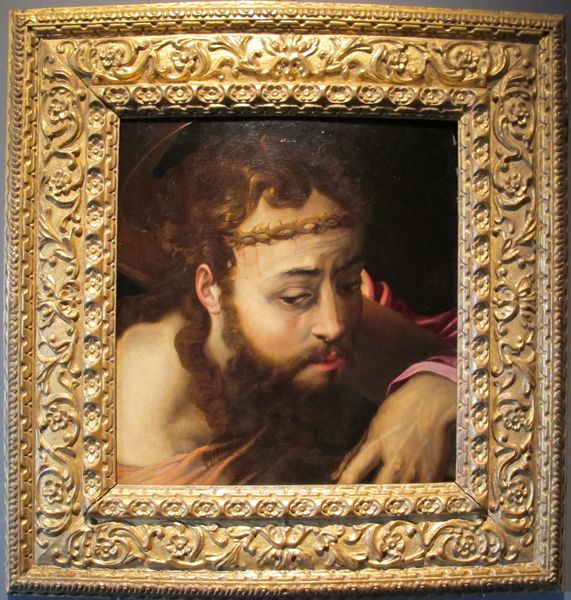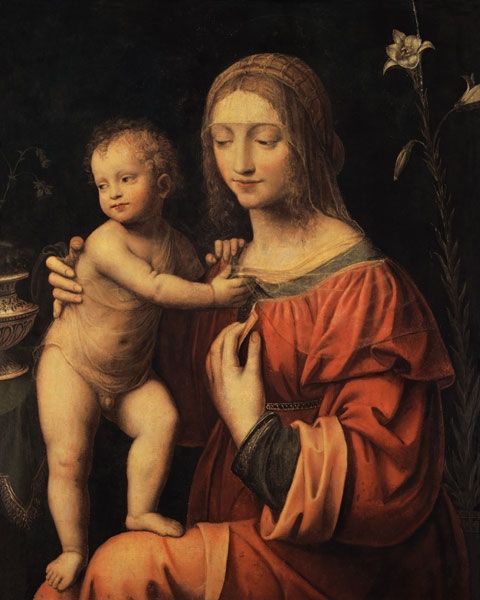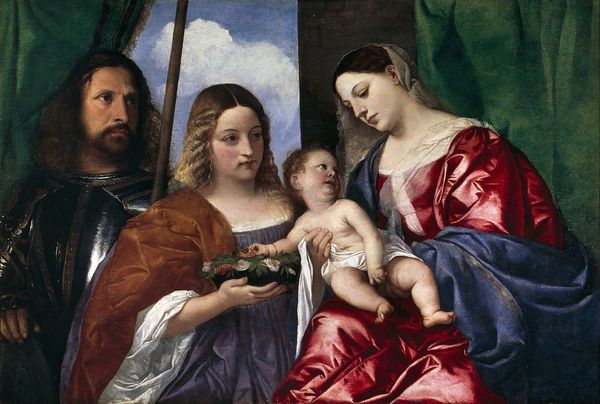
#
abstract painting
#
sculpture
#
possibly oil pastel
#
charcoal art
#
oil painting
#
acrylic on canvas
#
underpainting
#
portrait art
#
watercolor
#
fine art portrait
Copyright: Public domain
Curator: Looking at Bernardino Luini's "Salome with the Head of St. John the Baptist" from 1520, currently housed in the Louvre, the first thing that strikes me is the almost unsettling serenity. It’s so composed. Editor: Serene? I see something much more unnerving! Salome looks entirely unfazed holding that platter; she seems almost bored by the whole affair. Makes you wonder about the power dynamics at play here, and whose labor exactly facilitated such gore? Curator: Precisely. Let's consider the materials and workshop practices involved. Oil paint, likely applied in thin layers, allowed for that porcelain smoothness of Salome’s skin and the metallic gleam of the platter. How many apprentices would have been involved in grinding pigments and preparing the canvas? These paintings never emerged from a vacuum. Editor: You're right. And the lighting. So classical, and almost soft, giving the severed head an unexpectedly dignified presentation, doesn't it? Makes you almost forget the violence until you dwell on the context: A king’s rash promise, a vengeful mother, a pawn princess doing the grim work. A tragic tableau painted with deceptive sweetness. Curator: Think of the symbolism! The platter isn't just a dish, it's a vessel, an instrument in the fulfillment of a violent exchange. The choice to represent the biblical tale serves not just aesthetic or spiritual considerations, but social and political ones. The narrative reflects complex ideas about power, desire, and morality which shaped the lives of many patrons. Editor: Absolutely, and seeing her pale skin juxtaposed against the dark background enhances the grim beauty of the subject. Maybe this juxtaposition reveals that all actors involved in the deed become tainted by its darkness regardless of initial intention? And her faint gaze tells something about her hidden, probably, unwilling involvement, Curator: It makes you reflect on how such events shape the understanding of art making, its purposes, its audiences, the network that keeps alive practices over time and across various centers. Editor: Agreed. The image leaves a sting of unease long after the beauty has registered. A perfect embodiment, wouldn't you say, of high craft serving, perhaps unintentionally, as commentary on its disturbing sources.
Comments
No comments
Be the first to comment and join the conversation on the ultimate creative platform.


